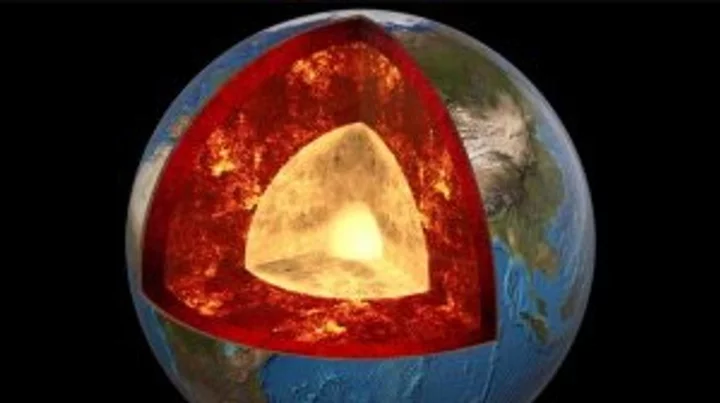
AI explosion merits regulation to rein in threats, experts say
By Sheila Dang AUSTIN Rapid advancements in artificial intelligence have the potential to exacerbate societal problems and even
2023-07-13 09:45

Dexcom U Kicks off 2023 Season With Expanded Roster of Athletes With Diabetes, Building on First-of-its-Kind NIL Program
SAN DIEGO--(BUSINESS WIRE)--Sep 19, 2023--
2023-09-19 18:23

iPhone 15 will get upgrade that could give a hint of the Apple Vision Pro, report claims
Apple’s new iPhone 15 will feature at least one new upgrade aimed at the upcoming Vision Pro headset, according to a report. The new iPhone is due out in September, and Apple has said little about it. But as the release nears, more reports are leaking out from the company’s supply chain that indicate its features. One of those may be a new “ultra wide band” or UWB chip that is looking ahead to Apple’s Vision Pro, according to a new report from reputable analyst Ming-chi Kuo. The chip will allow the phone and the headset to be able to work together, he suggested, as part of a “more competitive ecosystem”. “The ecosystem is one of the key success factors for Vision Pro, including the integration with other Apple hardware products, and related main hardware specifications are Wi-Fi and UWB,” he wrote on a post on Twitter. “iPhone 15 will likely see an specification upgrade of UWB, with the production process moving from 16nm to more advanced 7nm, allowing for improved performance or reduced power consumption for nearby Interactions.” The U1 chip is used give the iPhone and other devices better spatial awareness, so that they can find other objects more precisely. It is not clear what features that integration may provide for either the iPhone or the Vision Pro. Mr Kuo’s reports tend to focus on leaks from Apple’s hardware pipeline, rather than its software, so tend to reveal more about the physical nature of a product rather than how exactly it will be used. Apple’s U1 UWB chip first arrived in the iPhone 11, and has been in every iPhone since. It has rolled out more widely, to the Watch and HomePod as well as the AirTags and AirPods Pro. Initially, it was somewhat unclear what Apple intended to the U1 chip to do. But over time it released a number of products – such as those AirTags and AirPods Pro – which can be found with the phone, and rely on the UWB for more precise location. Mr Kuo also indicated that next year’s phone, the iPhone 16, will come with a new WiFi chip that will be “more conducive to Apple’s integration of hardware products running on the same local network and provide a better ecosystem experience”. Read More Man locked out of smart home for a week after he was accused of being racist Mark Zuckerberg reveals what he thinks about Apple’s headset – and it’s not good Can Apple make us love virtual reality? | You Ask The Questions
2023-06-20 01:54

JPMorgan Executive Finds Hidden Portfolio Risks in New CBP Laws
Investors face a new era of supply-chain risks with the potential to hit asset values, as the US
2023-09-05 13:15

Is Vampire Survivors Coming to PS5?
Players can enjoy Vampire Survivors on the Switch, but what about PS5?
2023-06-29 06:20

You Might Be Storing Your Bread All Wrong
If you think a bread box or plastic bag is the answer, you're not rising to the occasion.
2023-06-20 22:27

Tesla's Elon Musk optimistic on progress for self-driving, robots
By Abhirup Roy SAN FRANCISCO Tesla Chief Executive Elon Musk on Wednesday set new targets for artificial intelligence
2023-07-21 13:48

Senator asks Treasury to bar Chinese battery firms, minerals from US EV tax credits
By David Shepardson WASHINGTON (Reuters) -Democratic Senator Joe Manchin urged the U.S. Treasury on Monday to adopt the "strictest possible
2023-11-14 06:22

Stocks Poised to Fall
The Federal Open Market Committee will release the minutes from its early-May monetary-policy meeting, which will be closely scrutinized for clues about when officials might pause interest-rate increases.
2023-05-22 06:48

Move Over California: The Priciest US Gasoline Is Now in Washington State
Washington gasoline prices have surpassed those of California to become the most expensive in the country as drivers
2023-07-06 01:24

Whoopi Goldberg urges Blizzard to release 'Diablo 4' on Mac
It turns out that Oscar-winning actress Whoopi Goldberg is a fan of the Diablo series.
2023-06-09 03:15

After 28 Years, Microsoft Is Killing Off WordPad
Microsoft is finally saying farewell to WordPad. The company announced Friday that it plans to
2023-09-03 05:24
You Might Like...

Intel Makes Technology More Accessible for People with Hearing Loss

Ancient formation discovered wrapped around Earth's core

JPMorgan Chase is fined by SEC after mistakenly deleting 47 million emails

Appen Appoints Fab Dolan as Chief Marketing Officer

Skelly Who? Meet Home Depot’s Newest Giant Skeleton—A 13-Foot Jack Skellington

Weave Named a Leader in G2’s 2023 Summer Report

OrboGraph Leads the Industry in Check Fraud Detection, Welcomes 8 New Partner/Clients

China AI Chip Firm Targeting Nvidia Seeks Hong Kong IPO in 2023
